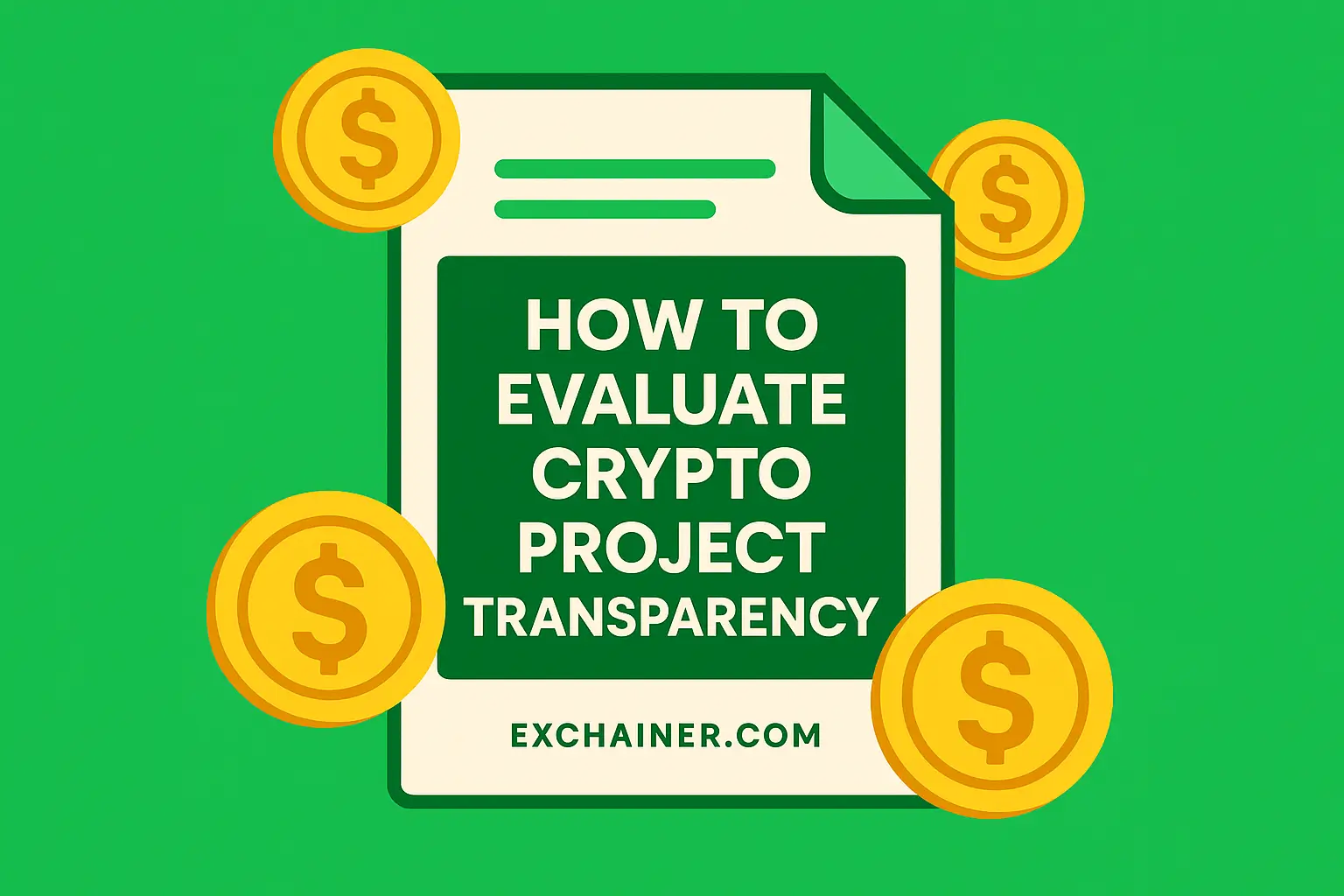Introduction
Friends, let’s be honest — the crypto world has become a wild playground where fortunes are made and lost often overnight. As exciting as digital currency investment can be, it’s also rife with scams, rug pulls, and misleading projects that leave investors burned. So, how can you stay safe and make smart decisions? The answer lies in understanding a crucial but sometimes overlooked concept: how to evaluate crypto project transparency. This skill will separate mere hype from legitimate opportunities and help you navigate the dizzying sea of new projects launching every day.
Being able to assess project transparency means looking beyond fancy websites and catchy token names. You’ll dive into who’s actually behind the project, how the code holds up, the fairness of tokenomics, and how clearly teams communicate with their communities. This guide is designed for anyone who wants to step up their crypto game — whether you’re an investor seeking safer bets, an auditor verifying claims, a community member wanting clarity, or a journalist digging for facts.
By the time you finish reading, you’ll have a practical checklist in hand. You’ll learn how to verify the team’s legitimacy, interpret audit reports, analyze token distribution, and use on-chain data to track what's really happening inside a project. You’ll know which dashboards shine a light on crucial info and which red flags to heed before jumping in. So, ready to deepen your knowledge and protect your crypto investments with confidence? Let’s get into it!
Assess the Team & Governance
One of the first and most critical steps when evaluating crypto projects is examining the team and governance transparency. After all, a project is only as legitimate as the people driving it.
Verify Team Identities
Start by verifying who the team members really are. Many scams use fake faces or completely anonymous developers. Try cross-referencing team bios with LinkedIn profiles and see if they have a proven history in crypto or tech. Past projects, publications, or involvement in reputable communities add credibility. Beware if you spot stock photos or no public presence at all — those can be significant red flags. Additionally, look for on-chain activity linked to team wallets; having zero on-chain history can indicate either a new or elusive team.
Governance Structure & Decision-Making
Next up is how decisions are made. Is the project governed through token holder voting, multisignature wallets, or centralized control? Transparent governance usually means clear proposals, voting records, and an opportunity for community input. If a single person or a small group can change everything without accountability, be cautious. Transparent projects openly share governance models and past voting outcomes so you can see what ideas have been approved or rejected.
Legal Entities & Advisor Disclosures
Finally, check for legal structure. Does the project have a registered company, and where? Jurisdiction matters — some countries have stricter crypto rules or offer less investor protection. Also, clear disclosure of advisors’ roles and any conflicts of interest can boost trust. A well-documented advisory board and transparency about legal registrations point to professionalism and reduce the risk of outright scams.
Review Code & Smart Contracts
Beyond people, the backbone of every crypto project is its code. Transparency here means open-source availability and thorough audits — the safer the code, the lower the risk of hidden traps.
Audit Reports: How to Read Them
Audit reports can look intimidating but understanding key points is vital. Top auditors distinguish critical vulnerabilities from minor or informational notes. Check if the audit firm is reputable; well-known ones like Certik or Quantstamp add trust. Also, an important sign of seriousness is whether the team fixed issues and obtained a re-audit. Simply publishing an old or ignored audit report is not enough.
Open-Source Code Activity
Next, explore the project's GitHub (or equivalent). Are developers regularly committing code? Frequent updates and active issue tracking show commitment to progress and transparency. Stagnant or abandoned repositories signal danger. Look for test coverage — well-tested contracts reduce bugs. Community contributions and feedback in code comments also hint at a collaborative and open environment.
Upgradeability & Privileged Access Risks
Some smart contracts use upgradeable proxy patterns, giving developers keys to change code after deployment. This can be both a blessing and a risk. Transparent teams disclose upgradeability and implement timelocks — delays that prevent sudden, suspicious changes. Watch for emergency functions that might let owners freeze or drain funds unexpectedly. Spotting these “backdoors” early protects you from potential rug pulls.
Analyze Tokenomics & Financial Transparency
Understanding a project’s economics is crucial for assessing long-term viability — in other words, the tokenomics transparency must be clear and honest.
Token Distribution & Vesting Schedules
Dig into how tokens are allocated. Who gets the biggest chunk — founders, investors, advisors, or the community? Check vesting schedules with cliffs (initial lockups) and gradual releases. Projects with huge unlocked supply risks can see prices tank when insiders sell too soon. Transparent projects publish detailed allocation charts and do not hide fast unlocks that flood the market.
Treasury Management & Fund Flows
Where is the money? Legit projects often use multisignature wallets for treasury funds — meaning multiple people must approve spending. Some even provide public dashboards showing how and when funds are used. Lack of fund flow transparency raises concerns about misuse or developer mismanagement. Look for clear spending disclosures that reflect roadmap goals rather than unexplained expenses.
Economic Model & Incentives
Lastly, analyze the token’s utility and incentives. Is it used for governance, staking rewards, or fee payments? What’s the inflation rate — is it sustainable? Beware of projects with over-the-top yield promises or incentive schemes that encourage dumping. Healthy projects balance token supply growth with real demand drivers like partnerships or product adoption.
Examine On-Chain Data & Public Communication
Finally, combine blockchain activity with how teams communicate externally to get the full transparency picture — this is your on-chain transparency check.
On-Chain Activity and Transaction History
Use blockchain explorers such as Etherscan or Polygonscan to inspect liquidity pools and token flows. Examine if whales dump tokens suddenly or if developers move funds frequently. Watch token flow analytics tools for subtle shifts that might signal trouble. Consistent, predictable on-chain activity aligns with good governance.
Public Communications & Community Signals
Follow official announcements, roadmaps, and AMAs. Transparent projects deliver frequent, clear updates and don’t disappear after raising funds. Look for consistency between promises and actions — teams that deliver on milestones earn trust. Evaluate community moderators’ behavior; are they open, helpful, and honest or defensive and censorious? These social signals are often underrated but crucial.
Transparency Tools & Dashboards to Use
To make your life easier, use dashboards from Dune Analytics or Glassnode that compile on-chain metrics and insight. Set up wallet monitoring alerts for suspicious transactions or large transfers. These tools help keep tabs on projects continuously rather than just at one moment.
Conclusion
To wrap it all up, remember that evaluating crypto project transparency requires a careful look at four main pillars: the team & governance, the project’s code & audits, tokenomics details, and transparent on-chain activity backed by clear communication. Each area reveals vital clues about project integrity and potential risks.
Here’s a quick checklist to keep in your back pocket: verify the team using multiple sources, dig deep into audit quality, scrutinize token distribution and vesting, and regularly monitor on-chain data paired with community updates. Never ignore red flags like anonymous teams, unaddressed audit issues, unclear token supply, or inconsistent messaging — these signs demand caution and can save you serious trouble.
To get started, bookmark reliable tools and platforms, create your due diligence template, and revisit projects periodically. Transparency is a journey, not a one-time check. As Benjamin Franklin said, "An investment in knowledge pays the best interest." Your crypto investments deserve that same respect.
For more beginner-friendly guides and reviews, don’t forget to explore our Crypto 101 category for foundational knowledge, Exchange reviews to find trusted trading platforms, and Tools and Wallets that enhance your crypto experience. Dive in, stay curious, and trade smart!
External reliable sources for further reading:
CoinMarketCap on Project Transparency
Etherscan – Ethereum Explorer












